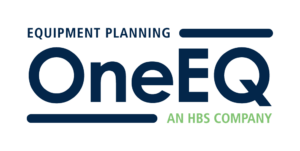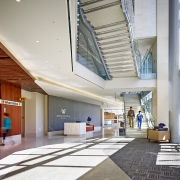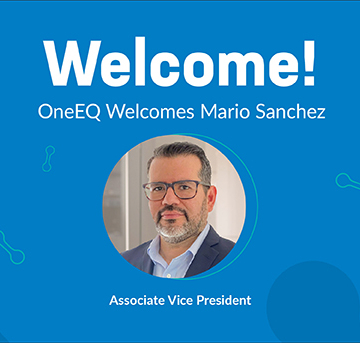Industry Insight – The New Healthcare Capital Cycle
OneEQ’s Rick Leonard and Nik Fincher talk about getting the biggest bang for your healthcare organization’s bucks when buying equipment
Did you know that 45-50% of the total cost of a piece of healthcare equipment is its software? Or that the world’s top healthcare and health research organizations are increasingly considering purchasing refurbished or gently used equipment, something that would have been virtually unthinkable ten years ago? How about that the trade-in offer you just received on a piece of equipment can be 60% to 80% less than the market value of the item if you sold it outright? These are just three examples of ways that the healthcare capital cycle has gotten increasingly complex and why hospitals and other healthcare organizations are rethinking how they do business, especially when it comes to technology and medical equipment.
The Changing, Increasingly Complex Playing Field
For those who need a refresher, before the Affordable Care Act, hospitals made money based on a payment-per-procedure basis. If a patient got an MRI, for example, the hospital was reimbursed a pre-determined amount based on that procedure. The ACA changed that model with a Medicare program called the Value-Based Purchasing Program (VBPP). Now, providers are paid based on the diagnosis and outcomes and not on individual tests. That means an MRI is no longer a stand-alone service—it’s an expense bundled into the calculus of a comprehensive treatment plan. So, for instance, if a patient comes in with kidney pain, the clinicians will determine what’s causing the pain. If they determine that the cause is kidney stones, the hospital will be reimbursed for the entire treatment plan for kidney stones, not for each test that led them to the diagnosis.
Certainly, part of that bundle payment will offset the cost of the equipment and technology used and there is a return on those assets, but it’s much more complex than the old formula of ROI (return on investment), or “This MRI machine costs X, and I will perform Y number of scans per year and get reimbursed Z amount, so it will pay for itself in 3 years.” Today it’s about ROA (return on assets), meaning all of a provider’s assets must work together to produce the desired outcomes. It’s a much more sophisticated way of thinking about the capital cycle of a single piece of equipment, let alone an entire health system. Couple that with the fact that every healthcare provider in the world is trying to cut costs and add value, and you can see how much this new model has affected the healthcare capital cycle.
It’s New to You
Speaking of adding value, refurbished and/or gently used equipment is a hot topic in the industry right now and for good reason. A decade ago, top facilities wouldn’t have even considered buying refurbished or slightly used equipment, but market dynamics are making it more appealing. Here, too, the calculus is complex.
It’s crucial to know when it makes the most sense to go used—today’s refurbished equipment is an entirely new generation with the latest technology making some gently used equipment nearly as good as new. Hospital beds are a great example—bed frames have changed very little over the years, it’s all the bells and whistles that attach to it that have grown in complexity. If we can reuse the frame, it can reduce the cost by up to 40% compared to the cost of a new bed. Multiply that over hundreds or even thousands of beds across a health system, and it’s clear why more hospitals are moving in this direction. We’ve also worked with top-tier clients who consider gently used equipment for temporary facilities when moving from one building to another; this can often save millions of dollars and has no detrimental effect on patient care.
Of course, good equipment planners must think about refurbished assets from every angle—you have to make sure it’s a reputable firm, that the refurbisher offers a warranty on the equipment, and that the acquisitions and logistics team know all the players, inside and out.
Trade or Sell on the Open Market?
On the other end of the acquisitions spectrum you have healthcare organizations trying to offload their existing assets when upgrading to new equipment. Should they try to sell it on the open market or trade it into the manufacturer? Trade-ins are certainly less complicated than trying to sell, but let us illustrate the situation with some cold, hard numbers: Manufacturers typically offer 18% of the true value of a piece of equipment. Across the healthcare industry, meaning there are billions of dollars at stake.
In one recent example, we worked as an “owner’s representative” for a client to replace six catherization labs. The vendor who was awarded the business for the new labs offered $10,000 per lab as a trade-in on the equipment being replaced. The actual market value for the equipment was closer to $50,000 per lab, meaning our client was leaving a lot of money on the table, money that could be used in many ways.
Of course, it takes real expertise to broker a deal like this, and not everyone will have these dramatic consequences. In some cases, a trade-in may make more sense if a number of clinics or hospitals are closing their doors and flooding the market with similar equipment. Or, on the other hand, some equipment, such as a particular mobile x-ray machine that was popular in the 1990’s, is still one of the most popular models in 2019 and providers are willing to pay top dollar for it. It’s crucial to have a team that understands the equipment and its functionality so that it’s presented to the market in top condition (e.g., don’t let a contractor cut electrical or communication connections). It’s also important to plan effectively so equipment doesn’t get damaged when moving it from place to place. These are the nuances that make working with a tried and true equipment planning, logistics and acquisition team worth every penny.



